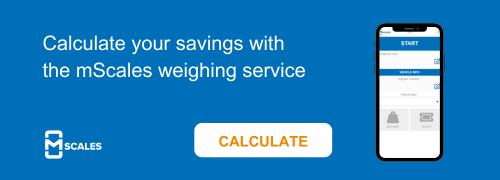If you're running a business that involves manufacturing or production, you know how important it is to manage your material flows efficiently. One approach that many companies are adopting these days is weight-based material flow management. This blog will explore some advantages of implementing weight-based material flows in your business. Please take a look at the five best benefits here.
Advantages of implementing weight-based material flow
1. Reliability stock management: One of the most significant advantages of implementing weight-based material flows is that it allows you to manage your warehouse. By tracking the weight of your materials as they move through your production line, you can keep an accurate record of how much stock you have on hand. This can help you avoid stock-outs, overstocking, and other inventory management issues. With the help of stock management, you can increase logistics profitability and monitor materials circulation.

/New_07_2023/New_mScales_materialflows.png?width=700&height=486&name=New_mScales_materialflows.png)
2. Improved quality control: Weight-based material flows can also help you improve your quality control processes. By weighing your raw materials and finished products at each production stage, you can quickly identify any quality issues and take corrective action before they become more serious. This can help you reduce waste, rework, and the associated costs.
3. Increased efficiency: Another advantage of implementing weight-based material flows is that it can help you increase efficiency. By tracking the weight of your materials, you can identify any bottlenecks or inefficiencies in your production process. This can help you optimise your processes and reduce the time it takes to produce your products.

4. Cost savings: Weight-based material flows can help you save money. You can identify waste or inefficiencies in your production process by tracking your materials. This can help you reduce the number of raw materials you need to purchase and the associated costs. By improving your quality control processes, you can reduce the rework and scrap you generate, which can also help you save money.
5. Compliance: Lastly, weight-based material flows can help you comply with regulatory requirements. Many industries are subject to regulations that require accurate tracking and reporting of material flows. By implementing weight-based material flows, you can ensure you meet these requirements and avoid fines or penalties.
Read more: Challenges And Solutions In Weight-Based Material Flow Management
Understanding the principles of weight-based material tracking

In conclusion, implementing weight-based material flows can bring several advantages to your business, from reliable stock management to cost savings and compliance with regulatory requirements. By adopting this approach, you can improve the efficiency of your production processes, increase the quality of your products, and reduce your operating costs.
Case Studies and Success Stories of Weight-based Material Flow Implementation:
Customer case:
Nordkalk is a pioneer with a digital weighing solution.
Introduction to weight-based material flows
Let´s discover together the benefits to your business!